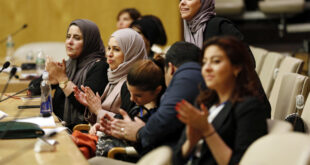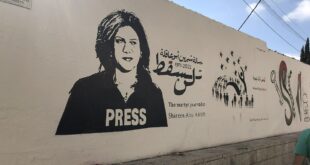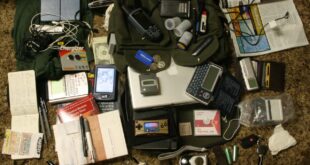Egypt’s first-ever presidential campaign opened dramatically for the ruling National Democratic Party (NDP) with a speech by the president at the recently built Al Azhar Park. Designed and laid out by the Aga Khan foundation, the park perches majestically on the edge of the city on a former landfill, overlooking the minarets of medieval Cairo. The president gave his speech to a crowd of dignitaries and a few thousand young supporters decked out in “Mubarak 2005” t-shirts and baseball caps, merrily waving their signs and cheering at any excuse. After the president had finished and left with his entourage, people slowly began to get up from their seats. Suddenly, the large video screens in the park went blank and there was the sound of shots. The screens lit up with scenes of people running, panicking and knocking over their chairs as a young Hosni Mubarak, dressed in an ornate military uniform, was hustled away by bodyguards. And then there was the briefest glimpse of Anwar Sadat, Egypt’s former president, fallen.
The crowd stood in shock as rarely seen scenes from the 24-year-old national trauma of Sadat’s assassination were suddenly replayed before their eyes. Soon, though, the images on the TV screens melted into more comforting scenes of a young Mubarak taking charge of a traumatized nation and steering it on towards future greatness. The film was not just about the president’s achievements, however. There also were touching personal exchanges where the president’s wife, Suzanne, recalled first meeting her husband at the Heliopolis Club or the time the president wept because his weighty responsibilities kept him from traveling with his sick son.
“It was a hit, it was a major success!” enthused Mohammed Kamal, the media coordinator for the NDP’s slick advertising campaign during the presidential election. The 15-minute infomercial, entitled Citizen and Leader went on to play several more times on both local television and satellite networks. “It resonated very well with people, because it showed this image, the human side of the president as one of the people, but at the same time he is a leader who can lead the nation and take decisive measures,” Kamal said. “I think those are the two main messages: He is a leader, but also human.”
In fact, Citizen and Leader was only one of the many media productions the NDP created for the campaign in an effort to remake the president’s image. There also were a number of shorter commercials highlighting other aspects of the president’s campaign message and a number of music video clips (the latter produced by the Ministry of Information)—In all of them, Mubarak was presented as a man of the people, a strong, paternal, and protective leader, but also a man in touch with Egyptians.
For a change, however, the president did not monopolize the nation’s TV networks during the elections period, though he still dominated them. In the past, parliamentary candidates had no access to the broadcast media and instead just spread their message with cloth banners and leaflets. In 2000, some candidates tried handing out videotapes to supporters containing their campaign messages. When it came to picking their president however, Egyptians chose their leaders through a simple yes-or-no referendum every six years. “Campaigning” was characterized by a massive media onslaught telling everyone to vote “yes” for the incumbent, with only a few brave opposition newspapers calling for a “no” vote. Now, for the first time, Egyptians witnessed the unprecedented sight of presidential challengers airing political advertisements of their own on state television. The new presidential election law originally had banned political advertising, but the ban subsequently was struck down by the constitutional court. Opposition candidates also were granted a fixed, daily allotment of free time on the terrestrial networks covering their campaigns
In general, all the campaigns displayed a level of media awareness that was light-years ahead of the last round of national elections. The NDP had an army of articulate workers calling up journalists and monitoring the media, while both Al Ghad and Al Wafd had active media departments albeit on a smaller scale. Ultimately, the amount of money a campaign had determined the quality and frequency of the campaign advertisements. Here, as in most things, the NDP dominated the field. In the case of the competition between the two major opposition parties Al Ghad and Al Wafd for second place, however, it was the lesser-funded Al Ghad with fewer ads that prevailed, suggesting that an engaging candidate and plenty of real campaigning remain important deciding factors in the contest.
The NDP Juggernaut
From its dramatic start at Azhar Park, the entire election campaign appeared to be an opportunity for the reformist wing of the ruling party to show its stuff. Certainly in the weeks following the election, including at the party conference at the end of September, the influence of the younger members, gathered around Mubarak’s son Gamal, appeared total. While Gamal Mubarak was never officially described as the campaign manager, he clearly was a major moving force, appearing at every campaign rally, though rarely close enough to the president to appear in the same photo frame, as frustrated photojournalists often noted.
The NDP’s campaign itself bore all the hallmarks of a more worldly and refined sensitivity to global standards of electioneering. “Gamal Mubarak has his own personal sensibility of how it works in the West,” observed S. Abdallah Schleifer, TBS senior editor and professor emeritus of Mass Communications and Journalism at the American University in Cairo. “The staff running the campaign is very sophisticated and has experience working in the West … They consciously set out to run what you could call an American-style campaign.”
Certainly, the new style was much more sophisticated and savvy than the campaigning strategy back in the days of the referendum, when the campaign was the responsibility of the Ministry of Information, then headed by party stalwart Safwat al-Sherif. As Kamal explained, the old ways just would not have worked in the new environment of multiple candidates. “Other people were competing for the minds and hearts and votes of Egyptians,” he said. “It would have been very awkward to run a multi-candidate election using the methods of the referendum.”
The party turned outside for media expertise and hired a professional Egyptian advertising company, Animation, to produce its television commercials, as well as print and billboard advertisements. “But of course we gave them the political guidelines,” Kamal said. Unlike campaigns in the past that focused on print or billboard advertisements, the vast majority of the NDP’s advertising budget went to (very expensive) television ads, Kamal said. The party’s ads appeared primarily on the main Egyptian terrestrial Channels 1 and 2, and Dream TV, a popular privately owned Egyptian satellite channel. In an interesting contrast, the Wafd Party, which supposedly had the same LE10 million campaign budget as the NDP, put most of advertising resources into print ads in the national dailies.
Presidential advertising had a dry run, in a way, back in April, when Mubarak sat down with media mogul Emad Eddin Adeeb for a seven-hour “fireside chat” that was broadcast over three days on national television. Directed by Lenin el-Ramle, one of the most commercially successful directors in Egypt, the interview discussed the high points of Mubarak’s career as well as giving a glimpse of the president’s human side.
The Citizen and Leader biopic mentioned above, by up-and-coming director Marwan Hamid, followed the same pattern, albeit in a much more succinct manner. Other ads followed a more targeted approach, focusing on specific aspects of the president’s platform. One focused on the president’s achievements in the course of his 24-year-reign, another gave examples of his leadership abilities during times of crisis. This ad, in particular, played on people’s fears of instability by showing a series of images of regional crises and violence, juxtaposed with the firm hand and steady leadership of the president in Egypt. The final ad, one often shown during campaign rallies, featured the new image of the president created for the campaign—the same image of him that appeared on a series of large billboards under the slogan, “leadership crossing into the future.”
In this ad, “The president was pictured in a smart but fashionable shirt and tie sitting at a desk on which was an elegant writing pad and that most essential of all corporate accessories, the Mont Blanc pen,” observed Dina Ezzat and Shaden Sheab in the 18 August edition of Al Ahram Weekly. In the course of the television commercial, he took that same pen and wrote down on the pad all the campaign commitments he was making to the Egyptian people, against a backdrop of idealized images of peasants, workers and homemakers. According to Kamal, these themes and messages were tested and refined through polling and focus groups.
The professionalism of the NDP’s media campaign inadvertently was highlighted in contrast to the thousands of freelance pro-Mubarak advertisements that sprung up around the country in the last days of the campaign. These banners were very similar to those that festooned the city during the 1999 presidential referendum and weren’t constrained by the careful image-making of the new NDP. Using older images of the president showing him in the dark “dictator” sunglasses and heavy suits or untouched recent photos carrying the web of wrinkles that have etched themselves on the president’s face over the last 20 years, these posters were commissioned by supportive businessmen and stood in stark contrast to the officially approved material. One overzealous business owner put up an awkward, ill-proportioned statue of Mubarak in the neighborhood of Imbaba that was later removed when it recieved unwelcome media attention.
Al Wafd: Rebirth of the Leader
Egypt’s oldest existing political party, the Wafd, made a last-minute decision to contest the presidential election, but their advertising campaign was one of the contest’s most creative. Burdened with an uncharismatic candidate, 71-year-old Noman Gomaa, the Wafd went farther than any other party in turning its back on the traditional street rallies and parades, instead opting for a campaign that was almost entirely media-based. While the NDP held almost daily rallies as Mubarak gave speeches across the country, and Ayman Nour of the Al Ghad party held 21 rallies in 19 days of campaigning, the Wafd Party held only six rallies. Instead, the party’s LE10 million war chest went entirely to fund a media campaign, which appeared mostly on the pages of the major semi-official dailies. Wafd Vice President Mahmoud Abaza explained that right from the start, the party made the strategic decision to limit the number of rallies and go for an “unprecedented” media campaign. The idea made sense at the time, since early on in the campaign, Gomaa lost his voice during rallies and then twice made disparaging (and vulgar) comments about people in the crowd in front of an open mike.
Gomaa’s face, however, did feature heavily in both the print and TV campaign ads. Analysts described these ads as an attempt to present him as the party’s historic leader reborn. With an outstretched pointing finger under the slogan “Let’s Really Change Egypt,” Gomaa was supposed to call to mind the national hero Saad Zaghloul, the father of the 1919 revolution. The party’s television commercial featured Gomaa sitting at his ornate desk in his office, talking about how it is time that Egypt sees political change. As the camera pans around him, he calls on voters to “elect me and make me accountable for whatever I do.” The commercial ends with his promise to make a change. But as journalism professor and TBS senior editor Hussein Amin observed, it was not a very convincing message. “People wanted to see more,” he said.
In fact, it was in their print campaign that the Wafd Party really shone, producing a series of full-page ads that Magdy Mehanna, a columnist for the independent daily Al Masry Al Youm, called “highly skilled and extraordinarily intelligent.” Designed by a Cairo University professor of mass communication, the campaign used as its slogan “itkhanna” or literally “we are suffocating.” The message was that Egyptians were fed up and couldn’t take it anymore. The opening ad featured a series of photos of frustrated Egyptians and detailed common complaints such as poor education, the terrible job market and the deteriorating health service. The ads were sufficiently controversial for the major state-owned dailies to refuse to carry them initially—until the government itself had to step in and allow them to be run.
Throughout the campaign period, the ads appeared as stunningly expensive double page inserts in national dailies like Al Ahram, listing a different series of popular complaints, including issues not addressed by the president’s campaign, such as corruption. Accompanying these ads would be the standard, smiling shot of Gomaa. Towards the end of the campaign period, the print ads changed again, this time presenting the proposed solutions of the Wafd party and its promises if elected. The party also managed to put a number of billboards and posters up around town, though party members allege that these often were torn down by ruling party supporters. Anecdotal evidence suggests that, at the very least, these commercials increased people’s awareness about the Wafd party, which, despite its long history, had not been a very high profile party in the last few years.
Al Ghad: The Enthusiastic Upstart
If the Wafd campaign was long on commercials and short on public appearances, the campaign of the newly established Ghad Party was the exact opposite. Gamila Ismail, the campaign’s media coordinator and wife of presidential candidate Ayman Nour, said at the beginning of the campaign that the party simply couldn’t afford a major advertising campaign with a budget of only around LE1.5 million. However, the party did manage to get a number of impressive billboards up around the city, including one visible from the 6th of October flyover in Cairo, one of the crowded city’s main commuter arteries. Ayman Nour’s penthouse home in Zamalek also was host to a huge banner that overlooked a main bridge across the Nile. For the most part though, around the rest of the city and in the countryside, pro-Mubarak and even the occasional pro-Gomaa banner, swamped Nour’s signs.
Ismail explained that with only around LE200,000 of the campaign’s budget earmarked for broadcast advertising—and a minute on national television running between LE6,000-10,000—the decision was made not to rely too much on advertising. That said, Ismail did develop a television commercial for the campaign that emphasized Nour’s youth and vigor in contrast to his opponents. The ad was sung to the catchy tune “Raise Your Vote,” taken from a song by popstar Mohammed Mounir. The commercial shows Nour mixing with people, in the streets and on the campaign trail, and stresses the campaign message of hope for a better tomorrow. “It was very good and it appealed to a lot of segments of the population, of course, because of the popularity of Mohammed Mounir and there is also the promise of tomorrow,” Amin said. “It’s very appealing and very powerful, especially for the youth.”
Few people saw the ad, however, and not just because the campaign couldn’t afford to run it, but because at the last minute a copyright dispute erupted with Mounir over the use of his song. Though the lyrics of Mounir’s “Raise Your Voice” from Youssef Chahine’s film The Destiny had been changed and someone else was singing the song, the two were unmistakably the same song and it had been used without the singer’s permission. Mounir, who was once known for his daring lyrics and oppositional stances to the government, issued a complaint and the advertisement was held up while the whole matter was resolved. Ismail and the Ghad Party alleged it was all part of the government interference intended on hobbling their campaign.
Advertising Effectiveness?
It is difficult to draw conclusions about the effectiveness of the NDP’s media campaign from its candidate’s lopsided 88.6 percent victory, since the win can be attributed to a whole host of political, historical and structural factors unrelated to its advertising campaign. Still, the NDP did, by most assessments, produce the most professional and attractive media products. The ads and commercials presented a coherent message that resonated with Mubarak’s supporters—namely his leadership, reliability and experience.
What can be gleaned from the contest is the stunningly bad performance of the Wafd Party, which took only 2.5 percent of the vote compared to nearly three times that much for the underfunded Al Ghad campaign. At first glance, this outcome appears to fly in the face of conventional wisdom gleaned from Western election campaigns—that big budgets and plentiful advertising can win a campaign. It appears, however, that clever print ad campaign aside, the Wafd Party failed to galvanize voters. “I guess it was because of the poor campaign that was not really designed to appeal to different segments of the population,” said Amin, adding that their television commercial wasn’t very exciting. “In my opinion this setting of Noman Gomaa sitting at a very luxurious desk just talking—he’s considered as elite and not really touching base with average Egyptians and their concerns.”
The strength of the Wafd’s ad campaign was its newspaper inserts, which, in a society that is only 50 percent literate, perhaps did not reach enough people. The NDP’s Kamal noted that his party made a conscious decision to eschew print advertising, and that may have been a wise strategy. “We didn’t want to do that, we thought that it’s not effective at all,” he said.
There is also the simple fact that the Wafd Party campaign had to include their candidate in the ads and they simply did not have a very appealing product to sell. For those wanting change, Gomaa did not seem sufficiently different from the incumbent to be an attractive choice.
The successes of the Ghad campaign came despite their sparse advertising campaign and probably had much to do with the indefatigable, charismatic nature of their candidate who criss-crossed the country in the course of his campaign and at the very least, made sure he was on the television news every night. Aside from Mubarak, Nour was the candidate with the most name recognition, though not necessarily of the positive kind, due to previous run-ins with the government. During the election, he was facing charges for forging the signatures needed to establish his party in the first place. While much of this coverage tarnished him in the eyes of the public, it did set him apart as a clear challenger to the status quo—something emphasized by his youth and vigor.
In the end, none of the candidates’ campaigns succeeded in defeating the biggest challenger to the whole system: voter apathy. More than three quarters of registered voters didn’t bother to cast their vote, though it is true the amount could have been lower without the various media campaigns. A higher turnout was expected in the parliamentary elections, which did not have the same aura of a foregone conclusion as the presidential contests. Television advertising, however, did not play such a large role in these contests due to the lower spending ceiling (LE70,000) and the lesser means of the individual candidates.
While the presidential contest of 2005 was never much in doubt and the outcome seemed little different from the referendums of yesteryear, the event did have major significance for the Egyptian political scene. Never before had the Egyptians been exposed to such a vigorous election campaign. Television advertising was a key aspect of this change, especially since the airwaves had long been the exclusive domain of the ruling party. For the first time, the television was turned into a potential tool of the opposition—one which with time and experience (and more funding) they may learn to wield with more skill.
 Arab Media & Society The Arab Media Hub
Arab Media & Society The Arab Media Hub




